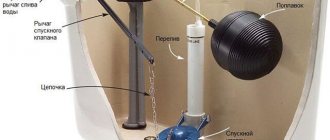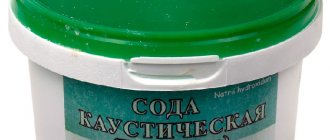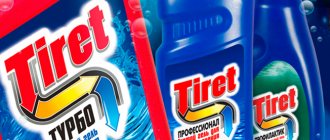In everyday life, housewives often have to deal with complex blockages of drainage channels, scale or the appearance of carbon deposits on dishes or other surfaces, which requires finding a way to deal with such precedents. Naturally, there are a lot of modern specific products on sale that will help you quickly cope with this or that problem, however, the cost of effective substances is far from affordable, and the result does not always live up to expectations.
In search of affordable options for solving everyday problems, housewives often turn their attention to ordinary baking soda, which is actively used as a cleaning agent in the kitchen. The option is not bad, but more effective in the area specifically under consideration would be not baking soda, but caustic soda, which is sold at household sales points and is an indispensable assistant in the fight against organic pollution in the kitchen, and not only. Let's consider what the substance is, what its advantage is in comparison with ordinary soda, in what directions and how to use it in everyday life.
General characteristics
The chemical formula of caustic soda, NaOH, which is common in everyday life, indicates that it belongs to a variety of powerful alkalis. Known by several other names. Caustic is more commonly used, caustic soda is found, and the name sodium hydroxide is less commonly used.
It is a solid white substance. In powder form, it looks like scaly miniature granules. They are practically devoid of a specific smell.
Caustic is hygroscopic. Easily dissolves in water. Directly in this case, a reaction occurs with the release of a significant amount of heat. The resulting solution is soapy to the touch.
Expert opinion
We recommend!
Produced in powder and liquid form. Sodium hydroxide, in addition to industrial applications, is widely used to solve some household problems. Along with the effectiveness of the product, the affordable price attracts.
Operating principle
Caustic sodium has an aggressive effect on various types of contaminants. It dissolves dirt and softens the plaque layer. After the substance has worked for several hours, you need to pour a large amount of water into the pipeline to wash away the contaminants.
Caustic soda can be used to dissolve organic waste in plastic pipes. Polymers are inert materials that do not react with chemicals. Dirt slowly accumulates on the smooth plastic walls.
Sewer plastic pipes (Photo: Instagram / armada_tmb)
Precautionary measures
Considering that caustic soda is a rather aggressive alkaline variety, it is assigned an increased second hazard class.
The maximum permissible shelf life is one year. After this period, the properties are lost. Store the substance in sealed non-metallic containers in a cool, unlit place.
When using caustic soda, it is necessary to wear personal protective equipment: a special mask that protects the respiratory system, goggles, and durable rubber gloves.
Expert opinion
Advice!
In case of accidental splashes on mucous membranes, immediately wash them with clean water. The skin is treated with table vinegar dissolved in a ratio of 1:5 in water.
Advantages and disadvantages
Positive traits:
- rapid removal of organic deposits;
- ease of use;
- saving on calling a sewer drain cleaning service;
- availability;
- Possibility of use for cleaning pipelines made of plastic, rubber, cast iron, steel;
- heat generation, which helps to quickly clean the sewer drain.
Negative qualities:
- Caustic soda is only suitable for decomposing organic deposits.
- High toxicity of the chemical. In order not to harm your health, you need to follow safety rules.
- Caustic soda can only be stored in a closed container. In the open air it evaporates quickly.
- Alkali loses its active properties 12 months after production.
Caustic is not recommended to be applied to enameled, galvanized or aluminum or brass surfaces. It will ruin the appearance of items.
Brass sink (Photo: Instagram / bronzoff)
Fighting blockages
At home, sewers often become clogged and it is necessary to use a variety of methods to eliminate them.
To cope with this problem, caustic soda is effectively used. This type of alkali easily dissolves fatty deposits of any age.
Fighting with a solution
For preparation, use a metal bucket into which 7 liters of cold water are poured. Add caustic soda. It is recommended to take 3 kg of powder for sewerage in a suburban building; for apartment conditions, 2 kg is enough.
Mix thoroughly, taking into account that when heat is released, the liquid boils and splashes appear. Therefore, when carrying out dissolution actions, they move a little to the side. A long wooden stick is used for stirring.
Expert opinion
We recommend!
When the reaction ends, the composition can be used if the pipes are cast iron or metal. Caustic is not suitable for plastic analogues, since it can deform the walls.
Processing sequence:
- 3.5 liters of the resulting solution is poured into the drain hole. This part of the procedure is carried out carefully, avoiding splashes on the surface of the sink, bathtub, or floor, since enamel or ceramic tiles may be damaged by alkali.
- Leave for three hours.
- Then pour in the remaining 3.5 liters of solution.
- Leave for another three hours. During the entire treatment period, no plumbing fixtures are used.
- At the final stage, turn on strong water pressure and flush the pipes for 15 minutes.
Recommended for you:
How to use baking soda against moths
If there is a slight blockage in the apartment, you can perform the procedure in one step, pouring the entire prepared solution at once and letting it sit for three hours before washing
Dry method
The method of using caustic soda without prior dissolution is considered more effective.
It is used to disinfect sewers, prevent blockages, and is also carried out after acid has been used to cleanse. It is not recommended to treat heavily worn pipes using this method, as they can be damaged.
Algorithm of actions:
- Hot water is poured into the drain - approximately 2.5 liters in order to warm the surface of the pipes.
- Take soda in powder form - 3 tbsp. l. and carefully pour it into the hole through a paper funnel. Care should be taken to ensure that alkali particles do not fall on the surfaces of the plumbing fixtures.
- Pour in 300 ml of hot water.
- They wait three hours.
During this period of time the reaction is completely completed. The pipes are washed with powerful water pressure.
Using the gel
Sodium hydroxide in liquid or gel form is less dangerous and more convenient to use, but you need to keep in mind that it does not show good results in clearing blockages. It is advisable to use it for the purpose of prevention, repeating cleansing procedures every month.
Sequencing:
- Shake the container with the gel thoroughly without opening the lid.
- Measure out a glass of the product.
- Pour into the drain, protecting the enamel surfaces from contact with drops of the cleaning agent.
- Pour in heated water - an average of 250 ml.
- Leave for three hours.
Expert opinion
We recommend!
At the final stage, at the end of the allotted time period, at maximum pressure, flush the sewer with hot water for 15 minutes, washing away all decomposed particles of contaminants.
What is
Caustic soda is the second name for caustic soda. The chemical formula of the substance is NaOH (sodium hydroxide). It is considered one of the strongest alkalis, capable of corroding organic matter.
Thanks to this property, sodium hydroxide copes even with severe pollution, literally “eating” dirt of biological origin. Despite the fact that human skin is an organic substance, caustic is used in cosmetology as a base for soap. It is caustic soda that gives soapiness and forms foam.
Difference from other species
From a chemical point of view, caustic cannot be considered an analogue of soda ash, which also helps to cope with dirt, blockages, and greasy stains in everyday life. The difference between caustic soda and soda ash is primarily in the origin of the substances and chemical composition.
Soda ash is an anhydrous salt of carbonic acid, sodium carbonate. At home, caustic soda is made by reacting sodium carbonate with water. The second product of the reaction is sodium bicarbonate - baking soda. Caustic soda is conventionally called soda, since it is not a salt and does not contain carbon monoxide.
Unlike its “relatives,” sodium hydroxide cannot be considered a household cleaning powder for universal use. The main differences with soda ash and baking soda are presented in the table.
Table - Differences in types of soda
| Peculiarities | Soda | ||
| Food | Calcified | Caustic | |
| pH level (0 – acidic environment, 14 – alkaline environment) | – 8 | – 11 | – >13 |
| Effect on the skin | – Gently cleanses the skin; – used for making homemade scrubs; – absorbs liquids, including sweat; – relieves itching | – Dries, tightens the skin; – causes irritation, itching; – provokes allergic reactions; – aggravates chronic skin diseases | – In its pure form it leaves chemical burns; – used as a base for soap |
| Use in food | – Neutralizes the effect of acid; – used in baking to raise dough | – Used as a food additive E500 | – Used as a food additive E524 |
| Impact on pollution | – Removes dirt from vegetables and fruits; – cleans dishes; – collects unpleasant odors; – used as a bleach; – cleans drains in the washing machine | – Breaks down lime and rust deposits; – removes complex stains from cotton and linen; – cleans frying pans, pots, ovens from soot and grease; – kills garden parasites | – Copes even with complex blockages; – dissolves fat, hair, food debris; – disinfects; – removes fuel oil stains from rough fabrics; – protects the garden from pests |
Despite its chemical differences, caustic soda is similar in appearance to baking soda and laundry soda. It is a white crystalline powder with characteristic flakes. For industrial needs, caustic is produced in the form of a liquid. Caustic soda easily dissolves in water without forming sediment, releasing heat.
What is it used for?
Sodium hydroxide, due to its ease of preparation and strong alkaline properties, is widely used in production. Industrial areas where caustic soda is needed:
- light industry;
- pulp and paper production;
- medicine;
- oil and gas industries;
- metallurgy;
- automotive industry;
- food industry.
Alkaline soda helps in everyday life. The substance is not as widely used as baking soda and soda ash, but is effectively used for the following needs:
- removal of blockages - completely dissolves dirt, renews the operation of the sewer system;
- washing pots and pans – removes carbon deposits and old stains from products;
- soap making - added for soapy and cleansing effect;
- plant care - the substance is included in mineral fertilizers and spray solutions.
According to reviews, some housewives use sodium hydroxide to wash clothes made of thick fabric. Soda removes fuel oil and oily stains and is suitable for washing work clothes stained with machine oil. It is enough to put three to five tablespoons into the centrifuge of the machine. Hand washing is carried out only with gloves. In this case, three tablespoons of sodium are dissolved in 10 liters of water. Soaking is carried out for no more than two hours.
Precautionary measures
Caustic belongs to the second hazard class, that is, highly dangerous substances. When working, precautions should be taken to maintain the health and integrity of surfaces. The main nuances of using caustic soda are described in the table.
Table - Rules for working with caustic soda
| Action | Rules |
| the washing up | – Use safety glasses and a mask; – use rubber gloves; – secure hair with a hairpin or scarf; – provide air flow into the room |
| Application to different materials | – Allowed for use on steel, cast iron, enameled complete coatings; – do not wash Teflon, aluminum, galvanized surfaces; – it is forbidden to clean plastic pipes |
| End of work | – Rinse the treated surface with clean water; – wipe dry; – wash and dry your hands |
| Storage | – Store in a tightly closed container (soda absorbs moisture from the air, losing quality); – place away from fire and heating devices (it is a flammable and explosive substance); – prohibit access to animals and children; – use before expiration date (one year) |
The main harm to humans is chemical burns. If the substance gets on your skin, wipe the affected area with vinegar - this will neutralize the alkaline environment. If sodium hydroxide gets into your eyes, rinse with plenty of water and wipe the area around the eyes with a 2% boric acid solution. Seek help from your doctor.
On a suburban area
Caustic soda helps gardeners and residents of country houses disinfect and save plants from pests.
Recommended for you:
How to clean dirt and grease from a hood with soda
Cleaning the cesspool
Before using caustic soda to clean a cesspool, you should make sure that it is sealed and equipped with a properly functioning ventilation system. This eliminates the entry of caustic into the soil, which has a negative impact on its structure and nutritional characteristics.
A little more than half the volume of water is poured into a twelve-liter bucket. While stirring vigorously, add 2 kg of caustic soda with a wooden spatula. After the intense release of heat has ended, the liquid composition is poured into the pit. Repeat this procedure twice.
Safety regulations
Sodium hydroxide is a powerful alkali that can corrode even hard materials. To preserve your health and the integrity of surfaces, it is imperative to take precautions.
- Wear protective equipment. Before starting the procedures, arm yourself with goggles and a mask, rubber gloves should reach your elbows, clothing should be tight and not leave exposed areas of the body. This will protect yourself from chemical burns.
- Wait for the reaction to complete. Since caustic, when interacting with water, is capable of generating heat, you should not immediately start performing procedures with it. Wait a few minutes for the chemical reactions to complete.
- Do not spray the product. Surfaces, especially enameled ones, may suffer from this.
- Avoid contact with skin. If the product gets on exposed areas of the body or in the eyes, rinse them immediately under running water. Then treat with 2% boric acid. If after half an hour the burning sensation and redness still do not go away, seek medical help.
- Store correctly. Caustic must be stored in a well-closed iron or glass jar. It should not be in the public domain, as it is poisonous and explosive.
Remember that frequent use of caustic can lead to the destruction of the surface of even the most durable materials.
Cleaning dishes
Considering the effective cleaning effect of caustic soda, housewives use it to remove very stubborn stains from dishes. Please note that aluminum and Teflon kitchen utensils cannot be treated with this product.
Suitable for cast iron, enameled and steel varieties, which achieve ideal cleanliness.
Algorithm of actions:
- Take a large metal container. Pour 10 liters of water.
- Add caustic soda - 200 g.
- Pour out thin shavings obtained from grinding one bar of laundry soap.
- Inject office glue (also called “liquid glass”) - 150 ml.
- Mix thoroughly and immerse the dishes.
- The container is placed on the stove. With slow heating after boiling, keep for two hours.
- Rinse cleaned utensils thoroughly with cool water.
Expert opinion
We recommend!
Using this method, you can effectively remove greasy old stains from your plates. But they should be boiled for 10 minutes.
Reviews
On the Internet on forums, caustic soda receives mostly positive reviews, various cleaning recipes are offered, and there are many videos about the use of the substance. One of them is offered to your attention.
At the same time, forum members emphasize that caustic soda is not a panacea for all blockages in sewer systems. Complex, stagnant blockages can only be cleared mechanically: with a cable or by dismantling a plastic pipe, where possible, followed by cleaning.
Exclusive soap
Many housewives prefer to use homemade soap. It is safer because high-quality and proven components are used.
Recommended for you:
How to remove stains from linen and clothes with soda at home
Sequencing:
- Vegetable oil - 500 ml is poured into an enamel saucepan and slightly heated.
- In a separate earthenware bowl, combine caustic soda - 70 g and distilled water - 150 ml.
- After the end of the violent reaction, pour the soda solution into the oil. Stir with a wooden spatula until the caustic is completely dissolved.
- After obtaining a fairly thick, homogeneous mass, add aromatic herbs ground into powder - 2 tbsp. l. or essential oil with your favorite scent - 5 drops.
- Pour the gel-like substance into a low container, preferably rectangular in shape. Place in a dry place.
- After four days, the resulting soap is carefully cut with a sharp knife, forming pieces of the desired size, and left to mature.
Expert opinion
We recommend!
The readiness of the soap is determined by the whitish coating that appears on the surface. The process lasts up to one and a half months. Homemade soap with impressive cleansing properties lathers well and undoubtedly has a pleasant aroma.
How to flush a radiator with caustic soda?
You can only flush the radiator with caustic soda if it is made of cast iron or chrome-nickel steel. It is prohibited to use this method for radiators made of aluminum, iron, tin, zinc or lead, since when interacting with this metal, the caustic becomes an explosive substance.
Radiator flushing method:
- Flush the radiator in the summer, after turning off the heating completely.
- To do this, use a pump to pump a 15% caustic soda solution into the radiator.
- Leave the substance inside the heating device for 2–3 days.
- Drain the solution and wash with plenty of water.
What is the danger
According to the European classification, caustic soda is included in the second group in terms of danger level and is characterized as a caustic or corrosive substance.
She is capable of:
- cause severe chemical burns;
- cause irritation of the cornea or skin;
- injure the respiratory tract;
- cause metal corrosion.
Important. If timely assistance is not provided, contact of caustic alkali on mucous membranes or skin can cause irreversible consequences, such as blindness.
To avoid the negative effects of a substance on the body, you need to protect yourself.







